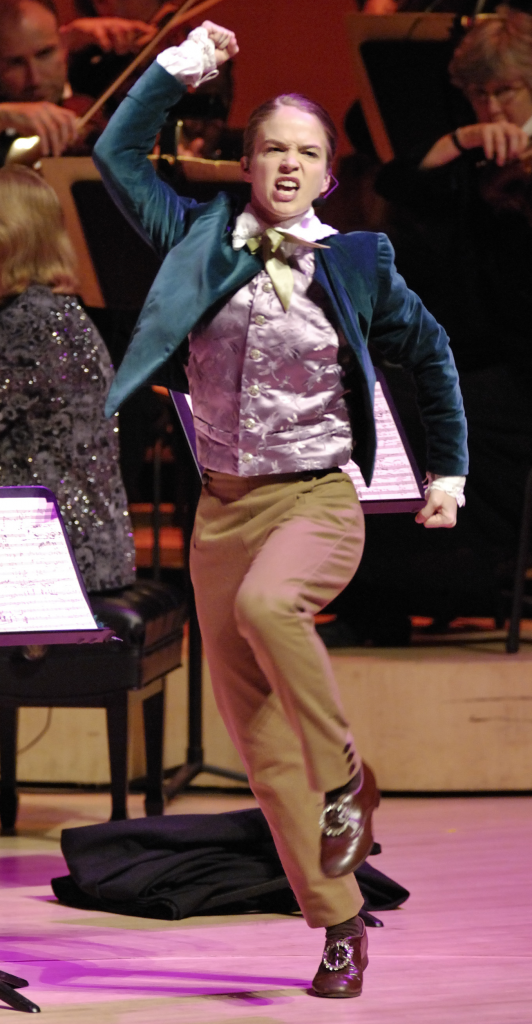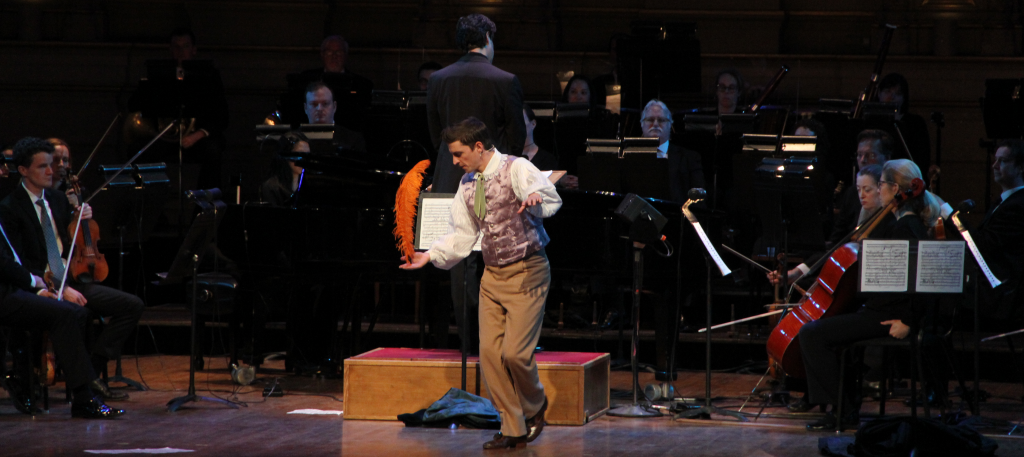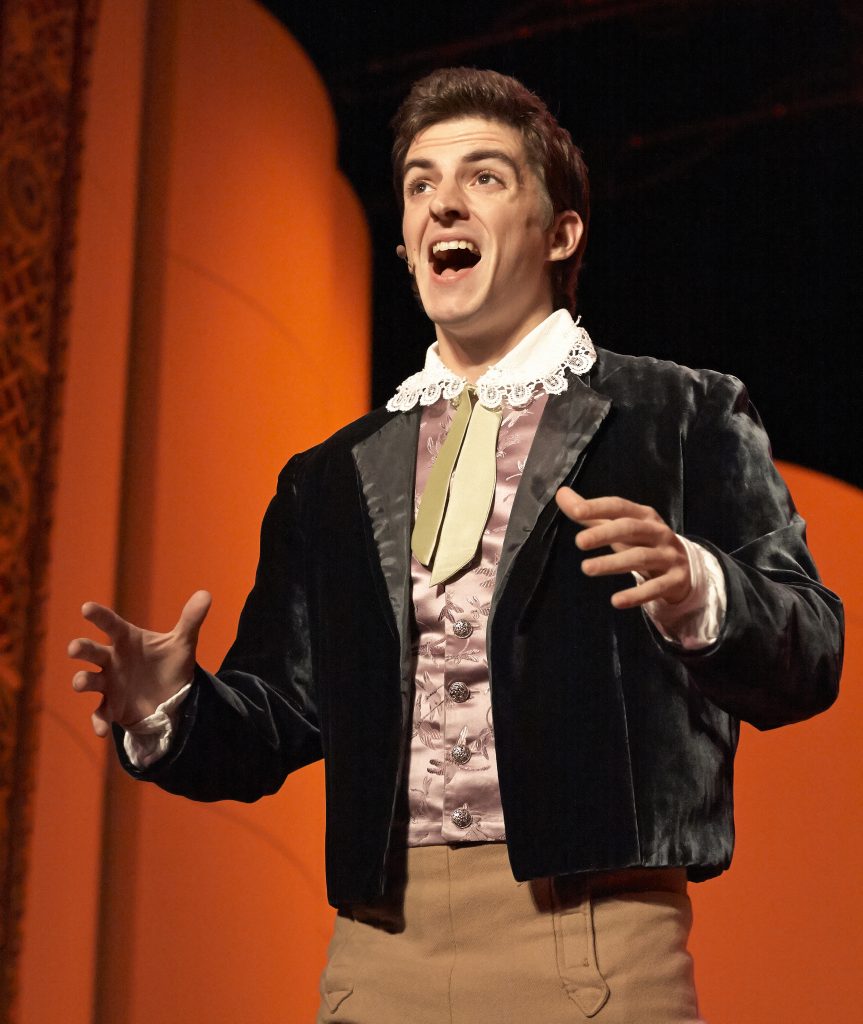The world famous production of Beethoven Lives Upstairs features a lively exchange of letters between young Christoph and his uncle. Their subject is the “madman” who has moved into the upstairs apartment of Christoph’s Vienna home. Through a touching correspondence dramatically underscored with the composer’s most beautiful excerpts, the young boy slowly comes to understand the genius of the man, the torment of his deafness and the beauty of his music.
Audiences are captivated by more than twenty-five excerpts of the master’s music, including the Moonlight Sonata, Fur Elise, and the great Fifth and Ninth Symphonies. The music is magically woven into the drama as two actors share their anecdotes and observations based on true incidents from the composer’s life. Presenting history, drama, music and fun, this engaging concert is an ideal addition to any children’s education program or family concert series. The performance is approximately 50 minutes in length and is recommended for audiences age six and up.
Synopsis
The funereal second movement of Beethoven’s Seventh Symphony sets the scene as we travel back in time from March 26, 1827, the day of Beethoven’s death, into the more intimate setting of young Christoph’s house in Vienna a few years before. Christoph’s father has just died and Beethoven has taken the room upstairs.
As the correspondence with his uncle unfolds, Christoph recounts the horrors of the composer standing at the window wearing no clothes, water dripping down into their apartment, and Beethoven playing late into the night. Finally, after attending the famous first performance of the Ninth Symphony, Christoph has a new understanding of Beethoven’s tormented genius and leaves us with these simple words of hope and renewal as the Shepherd’s Song is played. “Mr. Beethoven wanted to change the world with his music. Maybe he will do it, bit by bit. (sung) His song seemed to tell me that soon it would be Spring.”
The original audio recording of Beethoven Lives Upstairs claims dozens of top music, educational, and parenting awards. It has gone multi-platinum, been translated and distributed around the world, and made into an Emmy award-winning film. Based on this highly acclaimed recording, the Beethoven Lives Upstairs theatrical symphony concert is an imaginative way to introduce young audiences and their families to the life and music of Ludwig Van Beethoven in a live performance venue.

Watch & Listen
Music Excerpts

- Symphony No. 7, Mvmt. II
- Symphony No. 5, Mvmt. I
- Piano Sonata in E Major
- Symphony No. 1, Mvmt. IV
- Romance for Violin & Orchestra in G Major
- Pathétique
- Symphony No. 9, Mvmt. II
- Sonata, Op. 14, No. 2
- Symphony No. 4, Mvmt. II
- Minuet in G Major
- Spring Sonata
- Symphony No. 8, Mvmt. II
- Leonore Overture No. 3
- Für Elise
- Orchestral Polonaise
- Sonata, Op. 27, No. 2 (Moonlight)
- Mozart Variations
- Symphony No. 6, Mvmt. I
- Symphony No. 6 (Birds)
- Symphony No. 6 (Storm)
- Piano Concerto No. 1
- Piano Concerto No. 5
- Nel Cor Più
- Bass Sting
- Rage Over a Lost Penny
- Symphony No. 6 (Tremolo)
- Symphony No. 9 (Ode to Joy)
- Symphony No. 9 (Finale)
- Piano Sonata
- Shepherd’s Song
Instrumentation
String count 6.6.5.4.3
2.2.2.2—2.2.2.0—tmp—2per—pf—strThe instrumentation listed represents the maximum number of books we will supply to accommodate the largest of orchestras. Though we will ship our full set of parts, we defer to your judgment in reducing players based on your particular needs and requirements.
A Conductor Score and Musician’s Parts are supplied at least 3 weeks prior to the performance. Included in the shipment are 43 books plus 1 conductor score and 1 reference script.
Reference Script
Conductor’s ScoreStrings
- Violin I (6 stands)
- Violin II (6 stands)
- Viola (5 stands)
- Cello (4 stands)
- Bass (3 stands)
Woodwinds
- Flute I & II/ [Piccolo] (1 stand each)
- Oboe I & II 1 (1 stand each)
- Clarinet I & II (1 stand each)
- Bassoon I & II (1 stand each)
Brass
- Horn I & II (1 stand each)
- Trumpet I & II (1 stand each)
- Trombone I & II (1 stand each)
Percussion
- Percussion (2 stands + 1 extra book)
- Timpani (1 stand)
- Piano (1 stand)
This production requires featured instrumentalists. The performance assumes a seamless performance, largely unbroken by applause or “soloist” appearances; therefore, we suggest that these players come from within the orchestra:

Violin:
Romance for Violin and Orchestra in G Major
Spring Sonata
Piano:
Piano Concerto No. 1
Piano Concerto No. 5
(see excerpt list for sonatas)
The pieces included in the performance are well studied by most musicians. Orchestras who have not performed Symphonies Nos. 1, 5, 6, 8 and 9 or Piano Concertos Nos. 1 and 5 are encouraged to hold rehearsals on their own in advance of the scheduled rehearsal.
